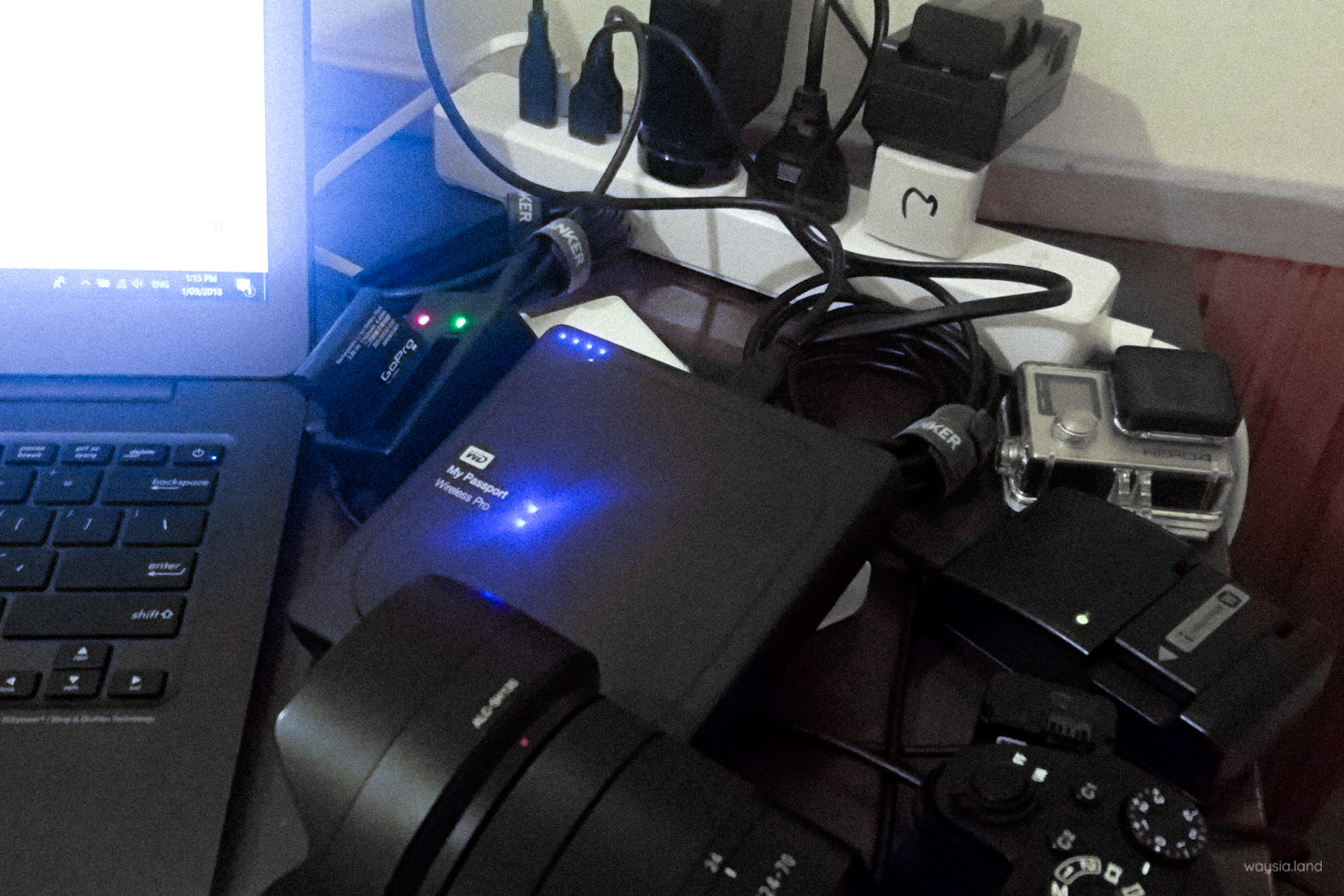How to charge A LOT of electronics FAST while travelling
In today’s age, everybody is charging something whether it’s a battery, phone, camera or laptop. In a hostel, it’s super convenient to charge overnight or unattended but it’s far from the safest thing you can do, yet people still do it, including me. Regardless of where you’re staying, charging is a requirement and you typically want your devices ready for the next day.
So how can you safely charge all your things so that it’s ready the next time you go out?
Plug it in while using it
A seemingly no brainer – charge it while using it. If you’re not doing anything too intensive like playing games you should gain battery faster than it drains. The more charge you have now the less time you need to charge it later. The less time it is charging unattended, the less chance it will get stolen. If you’re lazing around in your accommodation, just plug it in. A longer cord helps with this as you can get into a more comfortable position regardless of where the power point is. If you’re out on the road and carrying some kind of day bag, have it plugged into a power bank (more on those later) while your phone sits in your bag.
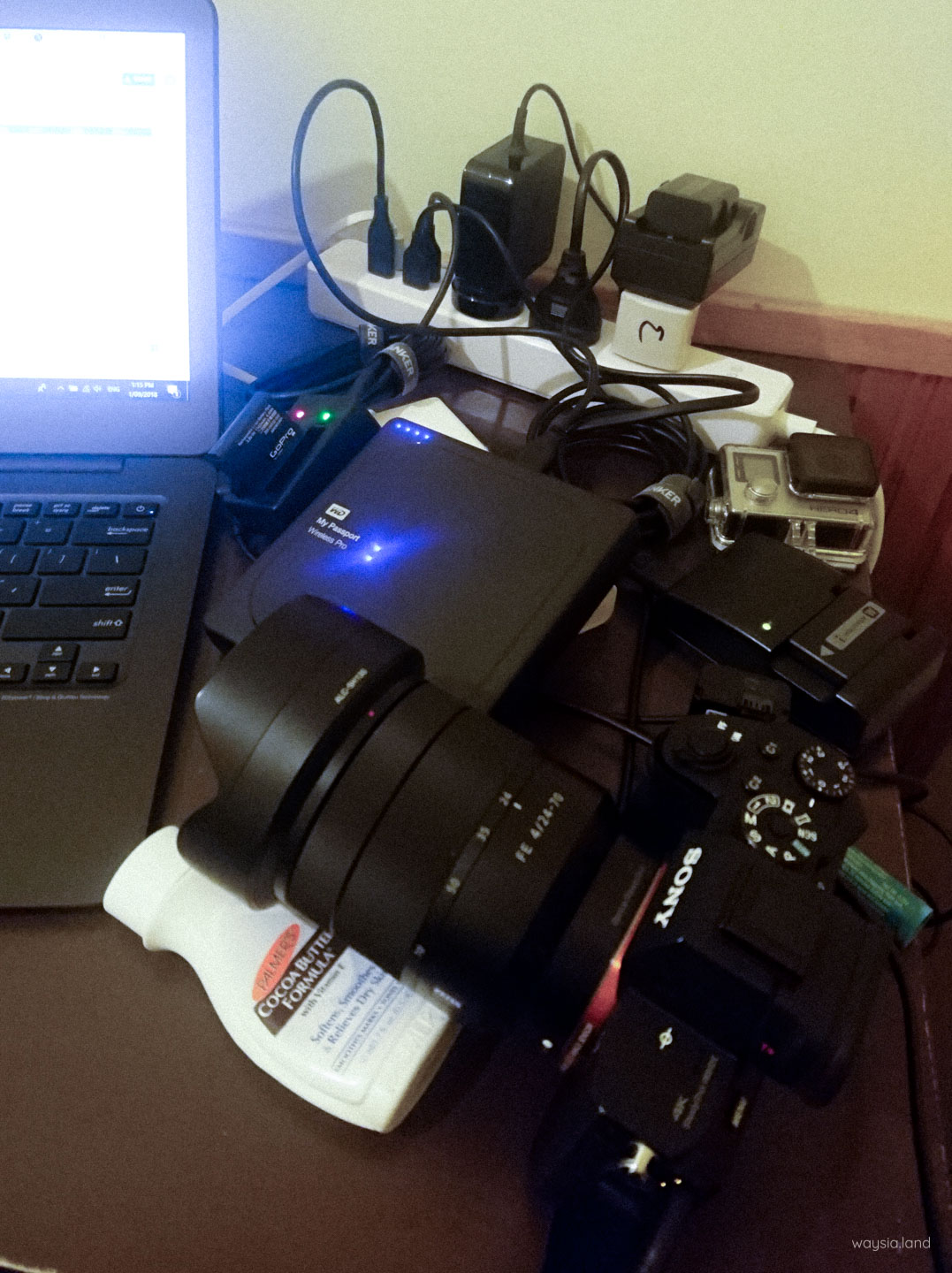
Use your best cables and chargers
The major problem with charging is that it takes forever, which is why people do other things like sleeping while their device is charging.
Not many people know this but not all USB cables and chargers are made the same.
Some will charge your device faster than others. The faster your device charges, the faster you can charge other devices, and the less time your device is out in the open ripe for the picking.
Typically you’ll want a charger with the highest “output” mA rating written on the back (not “input”). This can typically range from 200mA (slower) to 2500mA (faster). I won’t confuse you with the tech side of things and all you need to know is that more is faster.
The one that comes with your device when you bought it may or may not be fast so it’s important to read what it says.
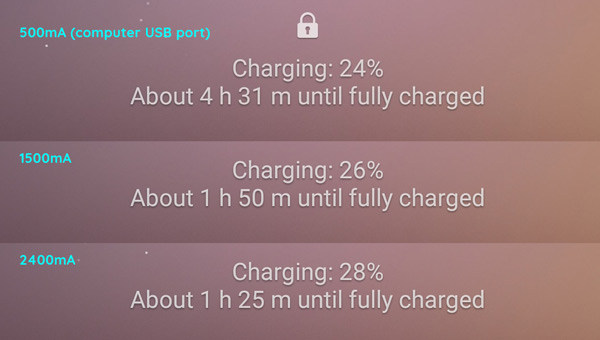
The above screenshots were taken using various chargers laying around. The difference between 500mA vs 1500mA is astounding. 1500mA vs 2400mA, not so much but still around 20% faster.
Cables are a little harder to compare since they don’t have ratings written on them. Typically thicker ones will be faster. Free ones given out at conferences are garbage and I just throw those out. Yes, their multi connectors might seem convenient but they are so slow you will go crazy waiting for a charge. Generally, you will have to compare simply through usage. You can always just buy a new one from a reputable company like Anker like I did but they aren’t exactly cheap. Just make sure it has the right connection type and the desired length.
Browse Anker USB cables on Amazon
Upgrade to quick charge
Note that this is separate from the above point. The latest generations of phones come with a fantastic technology called fast charge or quick charge. Again, note this is the name of the technology and not a general term for simply wanting to charge faster. These devices (can be things other than phones too) started coming out at around 2018 so if you bought around then be sure to check.

Depending on the device, this lets you charge it to around 60% in a whopping 30mins (latest version claims 50% in 5mins). It goes without saying that if you can get that much charge in so little time, you won’t ever have to leave it out unattended. Without this technology, you could have to wait several hours for this amount of charge. Note you do need a compatible device, cables, and chargers. If your device is fast charging compatible, it is likely the original charger and cable are compatible.
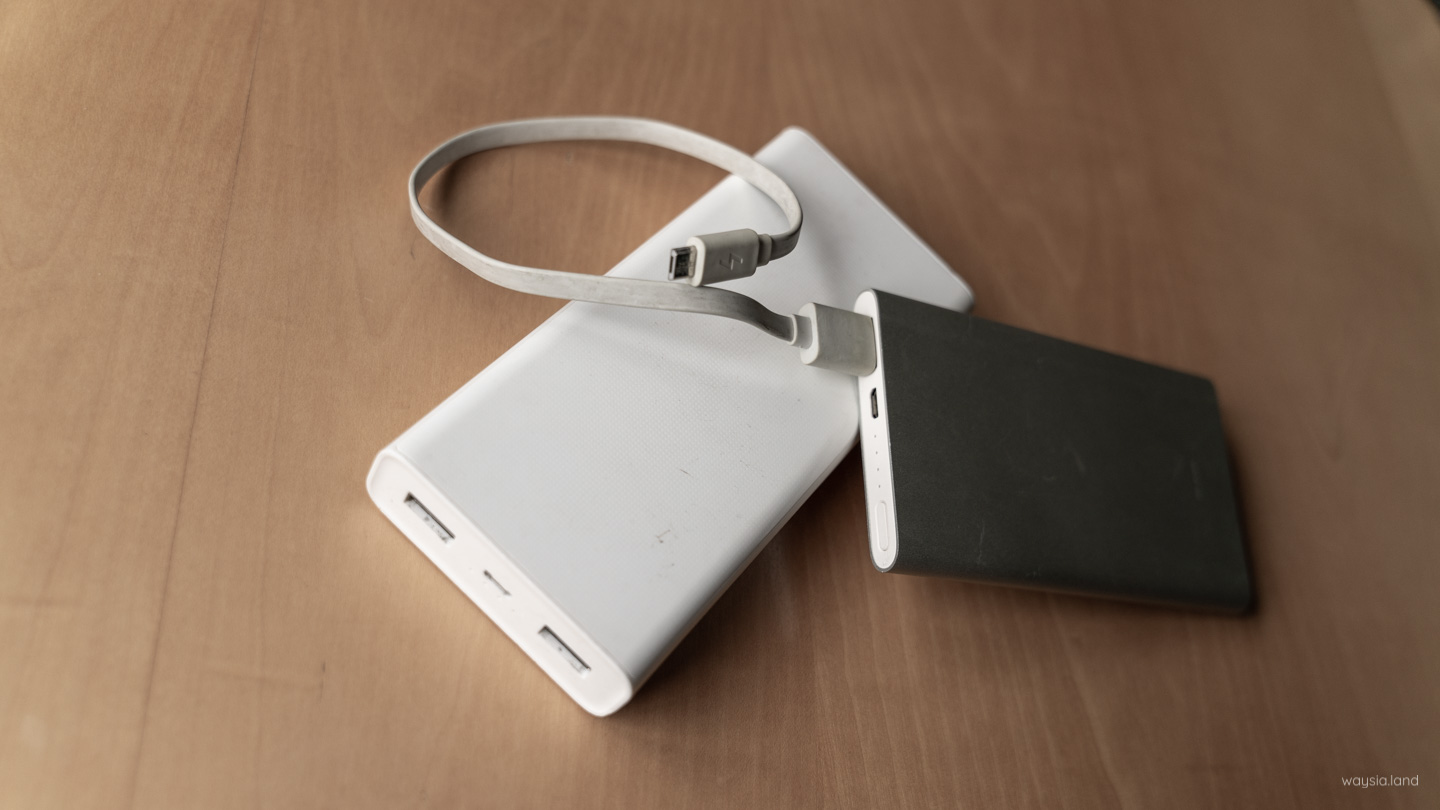
Use a power bank (battery pack)
I have a 20000mAh power bank (pretty big). I used to carry 2x smaller 2500mAh power banks (similar to phone size). For travelling that’s sort of not enough spare power for my liking since one 2500mAh power bank is about enough to make your phone last a full day. My 20000mAh is large enough to charge a phone around 7x to 10x over (depending on your phone), although I charge my camera batteries with it too. So what this means is that I don’t have to charge my phone (or other devices) daily in my accommodation. For example, if it looks sus, I can skip a day or 3 and be ok since my battery pack can charge my devices where ever I go. I can also charge my phone with the battery pack under my bedsheets. Without cables running into your sheets, no one will ever know!
Browse Anker power banks on Amazon.
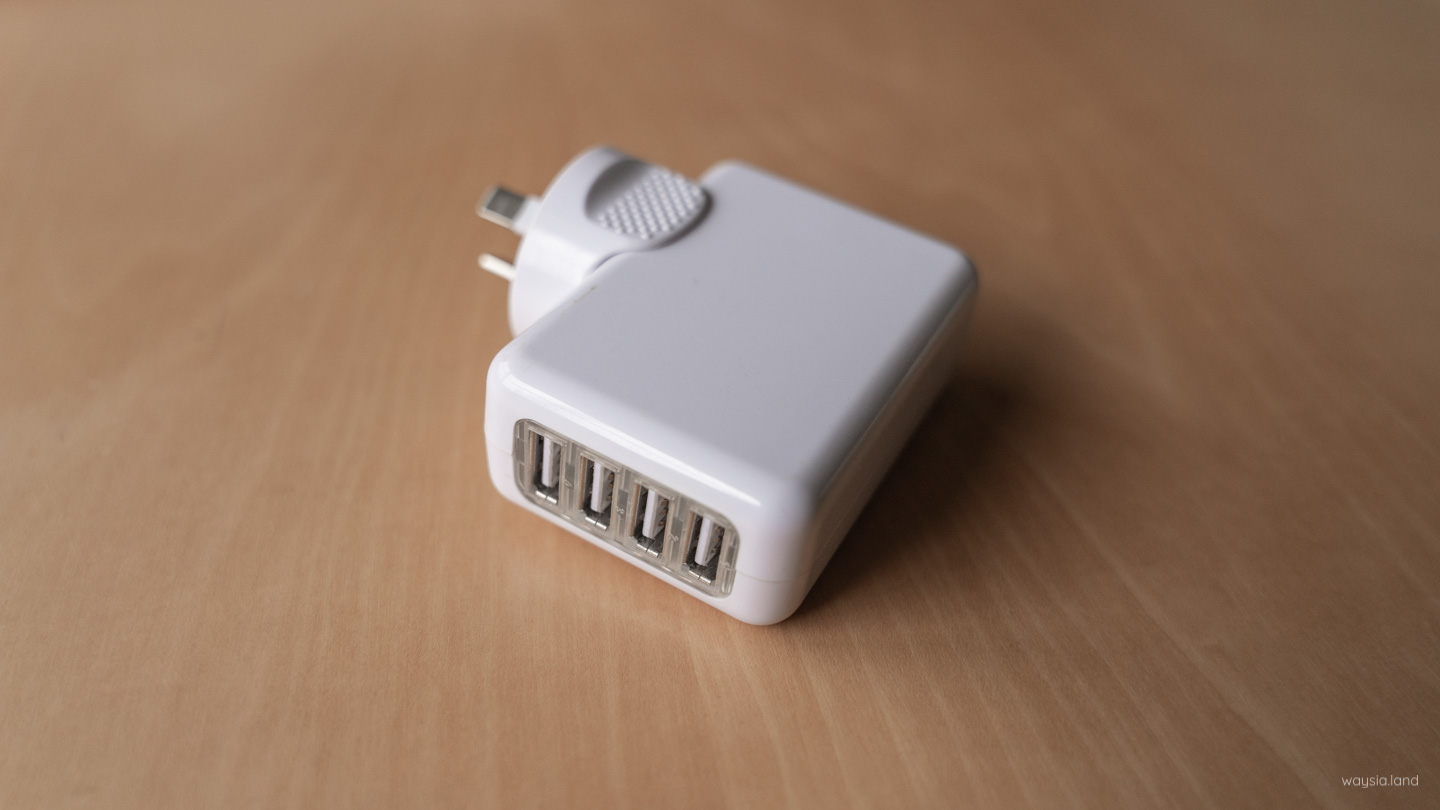
Using multi-port USB chargers
A multi-port charger allows you to charge multiple USB devices at the same time without having to carry a bunch of separate chargers.
The same concept when looking for a regular USB power adapter applies here. More mA is faster. There is a caveat here and that is, they may not all charge at max speed when charging say 4 devices at a time vs charging 1. Be sure to read the description so you are not disappointed. Similarly, not all may support “Fast Charge” technology. See these two examples from the same company (links to Amazon):
Anker 4 port USB charger that has 1x Fast Charging port and 3x regular
Anker 4 port USB charger that has 4x regular
If you’re shopping around, take note of which socket type it is. Some come with removable plugs (the above examples don’t) where you can change the plug easily allowing it to work in any country without an adapter. Browse these on Amazon. Take note that some might not provide for all countries.
Another thing to take note of is regular USB vs USB C. If you have a USB C device then go with one that supports USB C. Even if you don’t, the ones with USB C will be more future-proof.
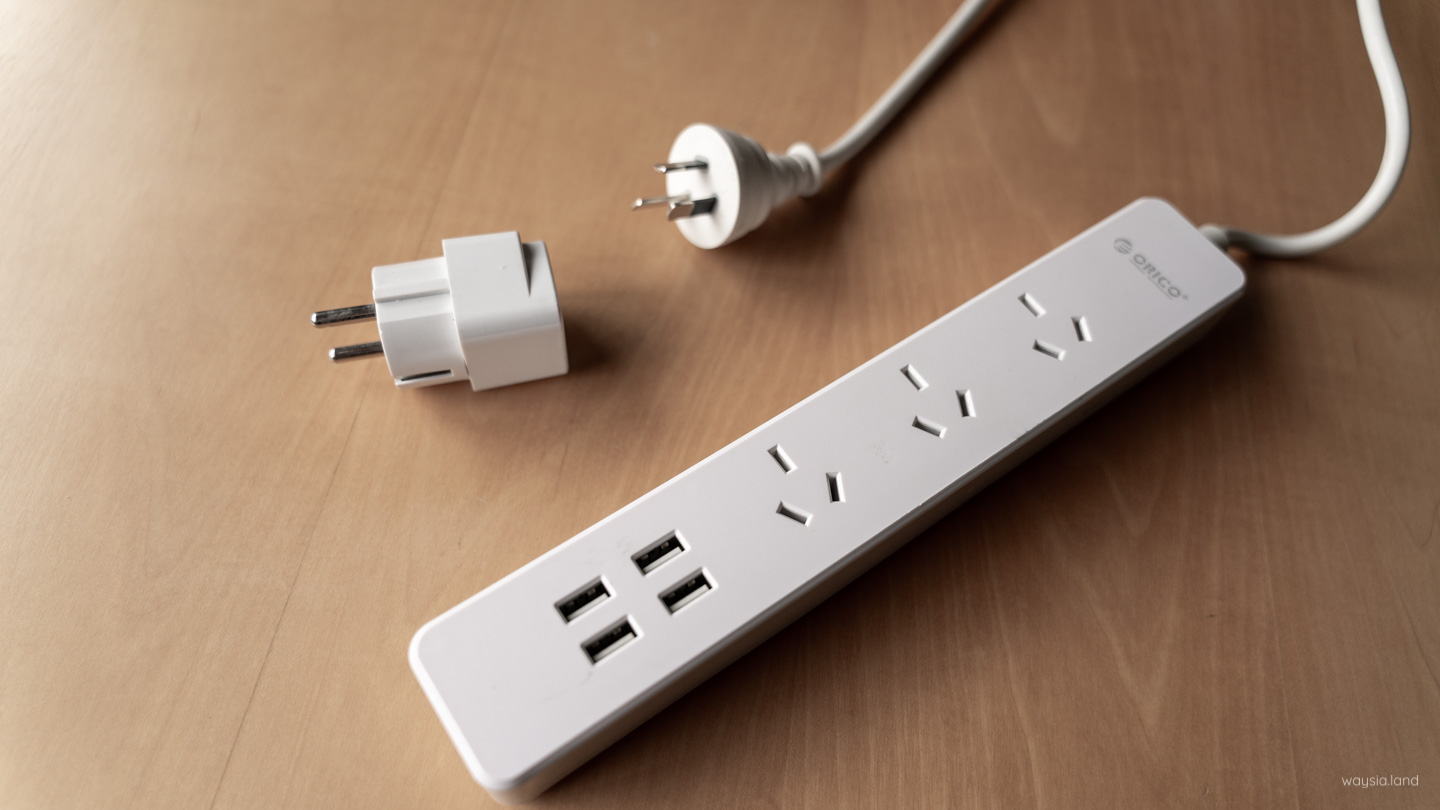
Using a power strip while travelling
This might seem a little crazy but I’ve taken a power strip while travelling. My brother has also taken one… maybe it runs in the family. Their size might be very off-putting to most people and the long thick cable doesn’t help either. But sometimes you need to charge a bunch of things like camera batteries and older laptops that require a proper AC socket. They make power strips with USB ports inbuilt into them too which negates the need to carry a separate multi-port USB charger. Boy are they convenient.
Here are two examples from Anker on Amazon:
Anker 3 socket + 2 USB + 1 USB C
Anker 3 socket + 3 USB (compact version)
They come available with different socket types for different countries. Of course, you should buy the version that has the socket type of your home country. This allows you to only need ONE power adapter that the power strip plugs into and then you can use it in any country you want. The 3 or 4 sockets may even have a multi-type socket inbuilt allowing you to plug devices from the most common countries without an adapter.
Again, you need to keep in mind charging 4 USB devices probably won’t be as fast as charging 1. The model I have (pictured) is old and can only charge 1 device at 2400mA or 4 at 4000mA (1000mA each). Newer models should be able to do better and good brands should have this written in the tech specs.
Power strips should be able to handle variable voltage (i.e. 110V to 250V) with your adapters doing the relevant conversions.
In-locker charging
If you’re in a top-notch hostel, your locker will have a charging point inside where you can safely charge without having to worry about it since it’s locked up. Unfortunately, as of writing, this is super rare. Pariwana in Lima and Cusco (Peru) have this and all hostels should take note.
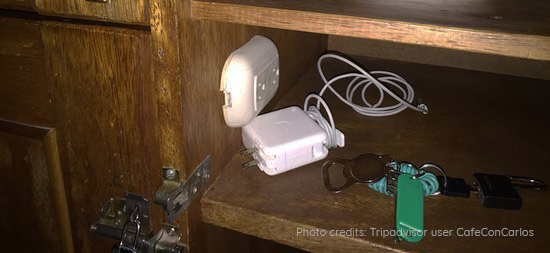
Personal bedside charging points
Personally, if staying at a hostel, I look for one with personal bedside charging points, or at least with power points near the bed (some reviews I’ve read mention charging point issues like 1 per room or something like that).
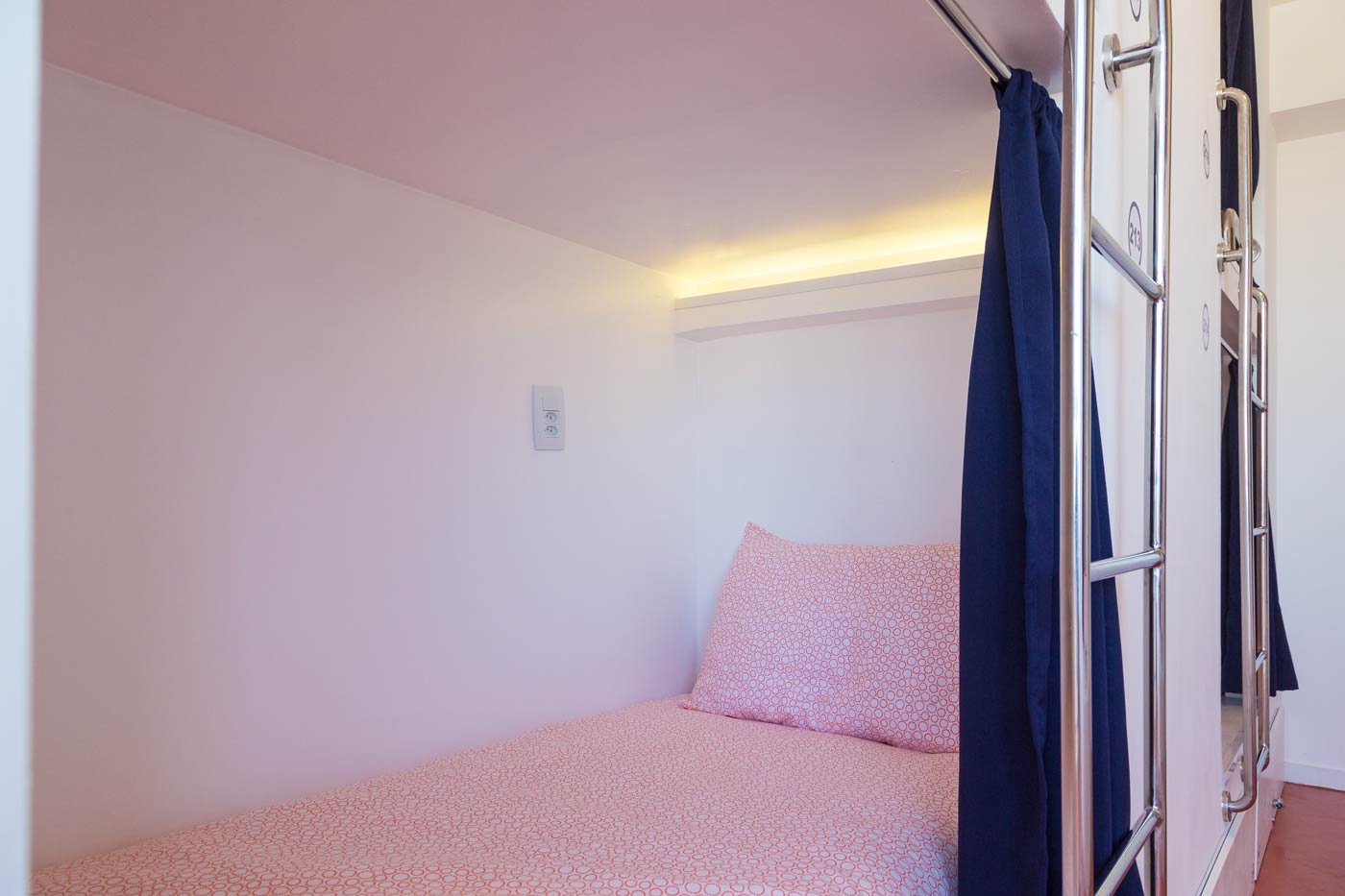
While not make or break, in addition to being a great convenience, having a personal bedside charging point does help boost security compared to say, a charging point by the door where someone can grab your item and be out the door in 2 seconds (actually happened to a friend). With a personal bedside charging point, if you do want to charge it overnight then your device can be put inside your pillow or under your sheets – while still charging. Note, don’t just leave it on top of your sheets even if it’s next to your face, you won’t be able to feel anything if it moves and I’ve heard stories where people have had items stolen like this.
Charge batteries unattended, not devices
If you simply must get some charge, charge your batteries, not your devices. My camera batteries can be charged in the camera body or through an external charger. Now a battery worth $20, which is going to have very little resale value and demand, or even use to the thief, is not going to be worth stealing compared to say a camera worth thousands of dollars. I regularly charge batteries unattended but I am careful of charging my power bank this way. A power bank has immediate use for the thief and if I can’t buy a replacement such as when I’m in a small town or in the middle of nowhere, that’s going to be a huge inconvenience. Similarly, if it’s your only battery for that device, I would caution against doing this for the same reason.
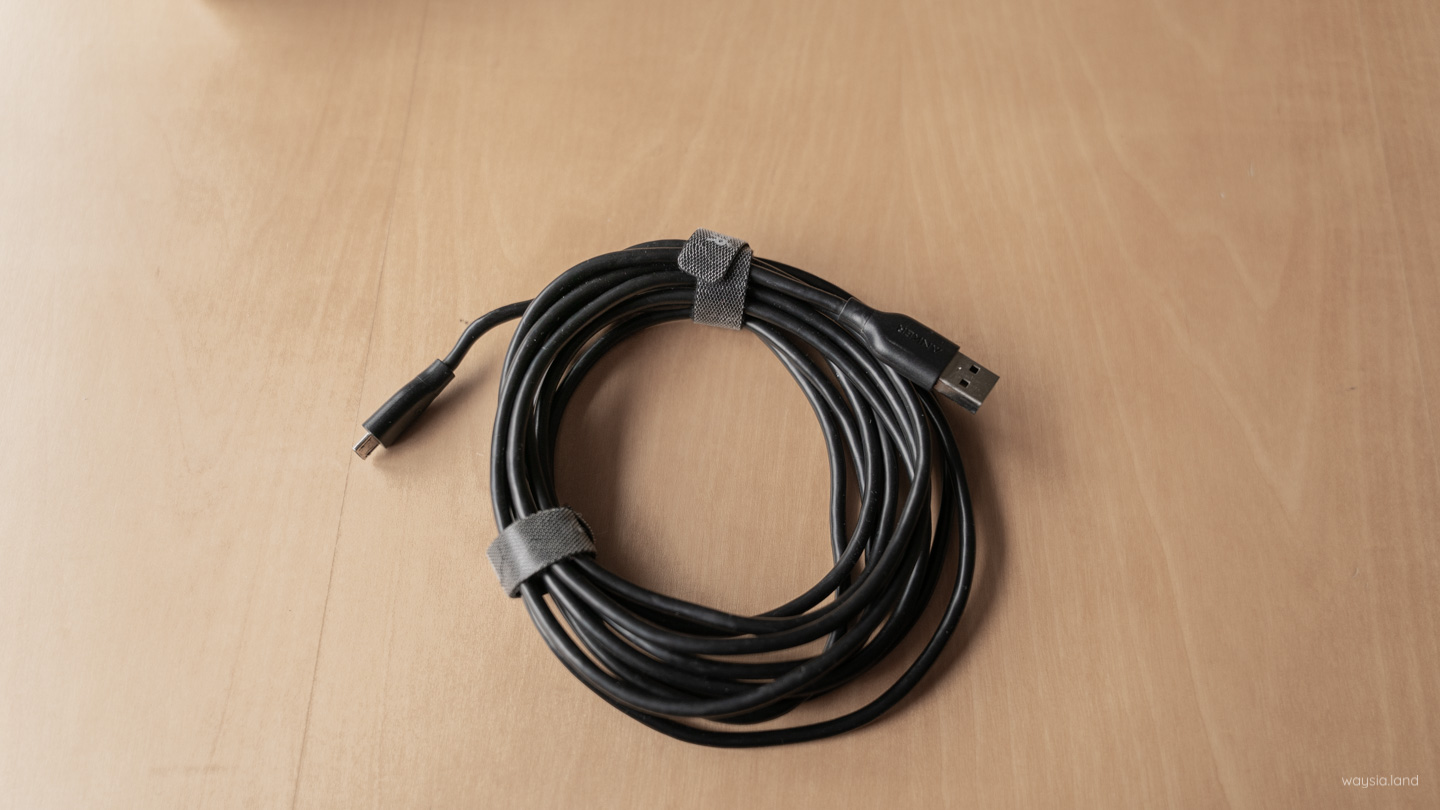
Use long cables
I’m talking minimum 1.5m long USB cable. The idea here is that regardless of where the charging point is, 99% of the time you’ll have a cable long enough to run from it to your bed. I use a 3m cable. It’s pretty damn long and it also takes up a lot of space/weight. I do worry sometimes that people will trip over it during the night if I have to run it across the room which I’ve had to do more than once.
What’s great is that it works for the top bed in a bunk bed without a personal charging point situation. For example, power points tend to be low to the ground but with a long cable, they can reach the top bunk of a bunk bed. It’s come in handy more than once.
Further, a longer cable can work on bus trips where the charging point is in the ceiling. If you have a 30cm (1ft) cable that will be too short to charge and use it at the same time.
